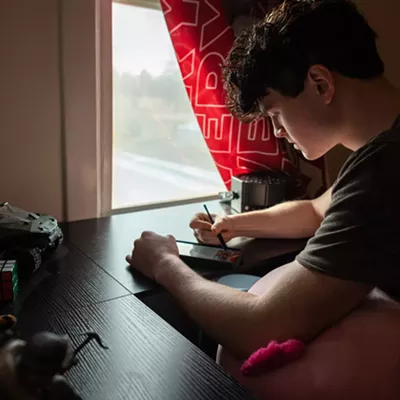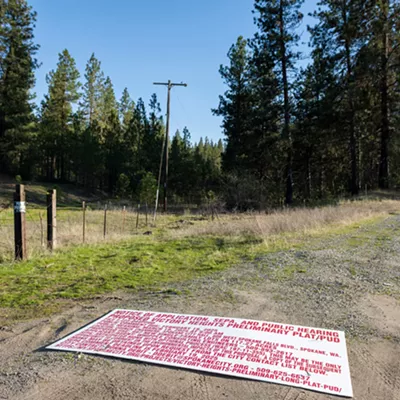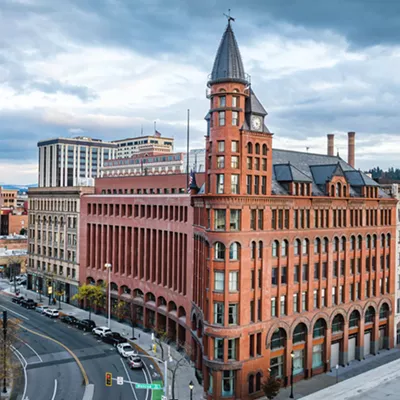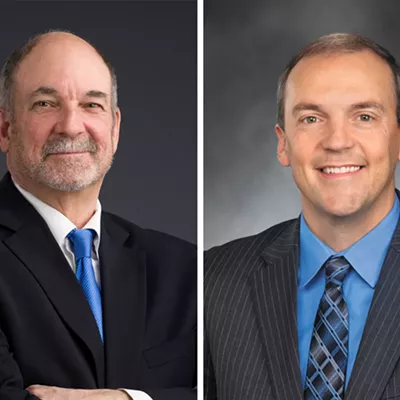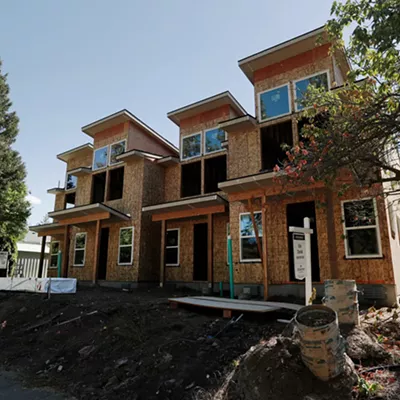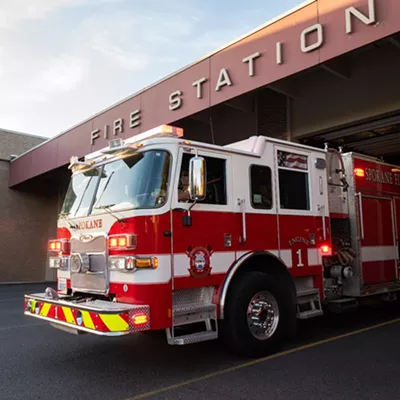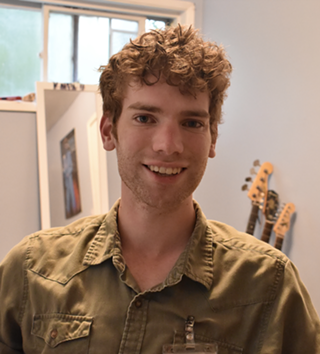Last year's heat wave saw record-breaking temperatures of 109 degrees and at least 20 confirmed deaths in Spokane. To avoid a repeat of the suffering, the city adopted a new emergency ordinance that requires cooling shelters to be opened anytime temperatures are projected to be 95 degrees or higher for two or more consecutive days.
In many ways, last week's heat wave was the first test of the plan.
On Monday, July 25, the city extended the hours of four libraries so people could use them to take refuge from the heat. The Spokane Transit Authority said people could ride for free if they told the driver they were on their way to one of the library cooling stations. The city also directed people to use the 19 splash pads and six pools located throughout the city.
"We are fortunate to have fantastic public facilities that can stretch to meet the needs of our residents quickly when weather conditions become extreme," Mayor Nadine Woodward said in a news release.
But as temperatures began to climb, many community groups grew worried that the city's response wouldn't be enough. A number of nonprofit and community groups, including the Music, Art, Creativity (MAC) movement, Spokane Community Against Racism, Latinos in Spokane, the Spectrum Center and others, started working together under the name Cool Spokane to take matters into their own hands and keep people cool. The group put out calls for volunteers and donations on social media and began planning pop-up cooling stations across the city.
One of the biggest problems with the libraries is that many unhoused people simply didn't know they were an option, says Hadley Morrow, who volunteered with Cool Spokane during the heat wave.
"It was shocking how many folks we ran across on the street who had no idea that libraries were available," Morrow says, adding that those same people often told her they wouldn't have wanted to go anyway.
Many folks have pets, a large number of belongings or a deeply ingrained distrust that prevents them from using the libraries, Morrow says.
Veronnica Hawkins volunteered to help Cool Spokane after seeing a call for help on social media. She worked for six days straight in brutal heat and says the tight-knit community made the experience incredibly worthwhile.
Every morning, Hawkins and the other volunteers would show up to a spot on Martin Luther King Jr. Way and Division Street to start setting up the canopy and coolers. Throughout the day, various nonprofits and community groups would drop off supplies. The group passed out water bottles, food and spray bottles so people could mist themselves down. Hawkins became known to people as the "famous peanut butter and jelly sandwich maker."
"It was really just a place where they could come get hydrated, eat some food, and really get some shade and get out of the heat," Hawkins says.
Hawkins estimates that the tent served between 300 and 500 people over the course of the week. The majority were unhoused or otherwise vulnerable to the heat. Many unhoused people ended up volunteering to help run the cooling station, Hawkins says.
Hawkins says her tent didn't see any serious medical emergencies, but they did see a lot of people who were suffering from dehydration or who hadn't eaten in days. She's not sure what they would have done if it wasn't for Cool Spokane.
During the week, Cool Spokane ended up raising around $5,000, which allowed them to operate five cooling stations daily in various parts of the city. Morrow says Cool Spokane ended up distributing over 6,000 pounds of ice, 7,000 water bottles, and hundreds of sandwiches and snacks.
At Camp Hope, a homeless encampment in the East Central neighborhood with more than 600 residents, volunteers also took matters into their own hands. On Tuesday, organizers with Jewels Helping Hands, a nonprofit that isn't directly affiliated with Cool Spokane, began building a large cooling shelter with fans, swamp coolers and space for 150 people. Camp Hope is a mile away from the nearest library. Julie Garcia, executive director of Jewels Helping Hands, says that even with free bus fare, most residents aren't willing to make the trip because they're worried about theft if they leave their tents unattended.
The city's plan for unhoused people to travel to libraries doesn't make sense, Garcia says, adding that setting up a cooling shelter at Camp Hope was the only logical solution.
"When you have this many of your citizens experiencing homelessness, there has to be a better plan," Garcia says.
The cooling shelter became a contentious issue on Thursday last week, when the city ordered the Washington State Department of Transportation to take the shelter down because it was unapproved and presented liability risk. WSDOT owns the land occupied by both Camp Hope and the shelter. The state agency hasn't approved either, and both are technically illegal.
In a joint statement released Friday, WSDOT and the Washington State Department of Commerce said they would not comply with the city's order because they were more concerned about keeping people safe and would continue to let nonprofit organizations help people in need.
Karen Potter, a Camp Hope resident, tells the Inlander that the cooling shelter has been an essential resource. She has two dogs and isn't able to make the trip to the library.
"I knew if I wasn't able to get into some place where there was air conditioning — or at least fans and water — my whole entire system would be screwed," Potter says.
The city had said WSDOT could face a daily fine of $536 if the tent was still up by 9 am Monday. But late Monday morning, the tent was still up and running and about 10 people were using it to cool off. In an email, Brian Coddington, the city's director of communications and marketing, told the Inlander that no fines were issued and that the city was continuing efforts to discuss a solution to the situation.
Potter says the cooling tent has been a "godsend" and that she's happy it's still up.
"I'm so glad DOT went and told the city, 'We ain't taking it down,'" Potter says, holding up a middle finger to illustrate the tone of WSDOT's response.
On Monday, the City Council moved to allocate $120,000 toward "providing shelter during extreme weather events, including but not limited to extra staffing hours at libraries during extended cooling center hours and operation of standalone cooling centers." The council also made plans to hold a special meeting on Thursday to discuss WSDOT potentially leasing the land occupied by the Camp Hope cooling shelter to the Empire Health Foundation or the city itself.
City Council member Zack Zappone says he doesn't think the city's cooling center plan has been adequate, and that asking the 600-plus residents of Camp Hope to seek out the libraries is unrealistic.
The ordinance adopted by the city last summer requires cooling centers be opened anytime temperatures get above 95, but it doesn't specify what a "cooling center" has to actually look like. Zappone thinks extending the hours of libraries and calling them "cooling centers" isn't in line with the intent of the law.
"I think there's a general frustration — what's the point of continuing to change the ordinances if they're going to be ignored?" Zappone says.
On Monday evening, Alexis Gallaway Conasket was working a tent outside City Hall distributing water bottles. They spent about 20 hours working at cooling stations during the heat wave; on Saturday, the heat was so intense they actually passed out.
"It really makes me concerned for the people that are stuck out here," Conasket says.
Conasket says they wish the city would find more locations to open cooling shelters and would make more of an effort to work with the many community groups who stepped up during the heat wave.
Morrow agrees. Nobody expects the city to do all of this work by itself, she says.
"I think what we proved over the Cool Spokane week is that there's a lot of folks willing to help," Morrow says. ♦







